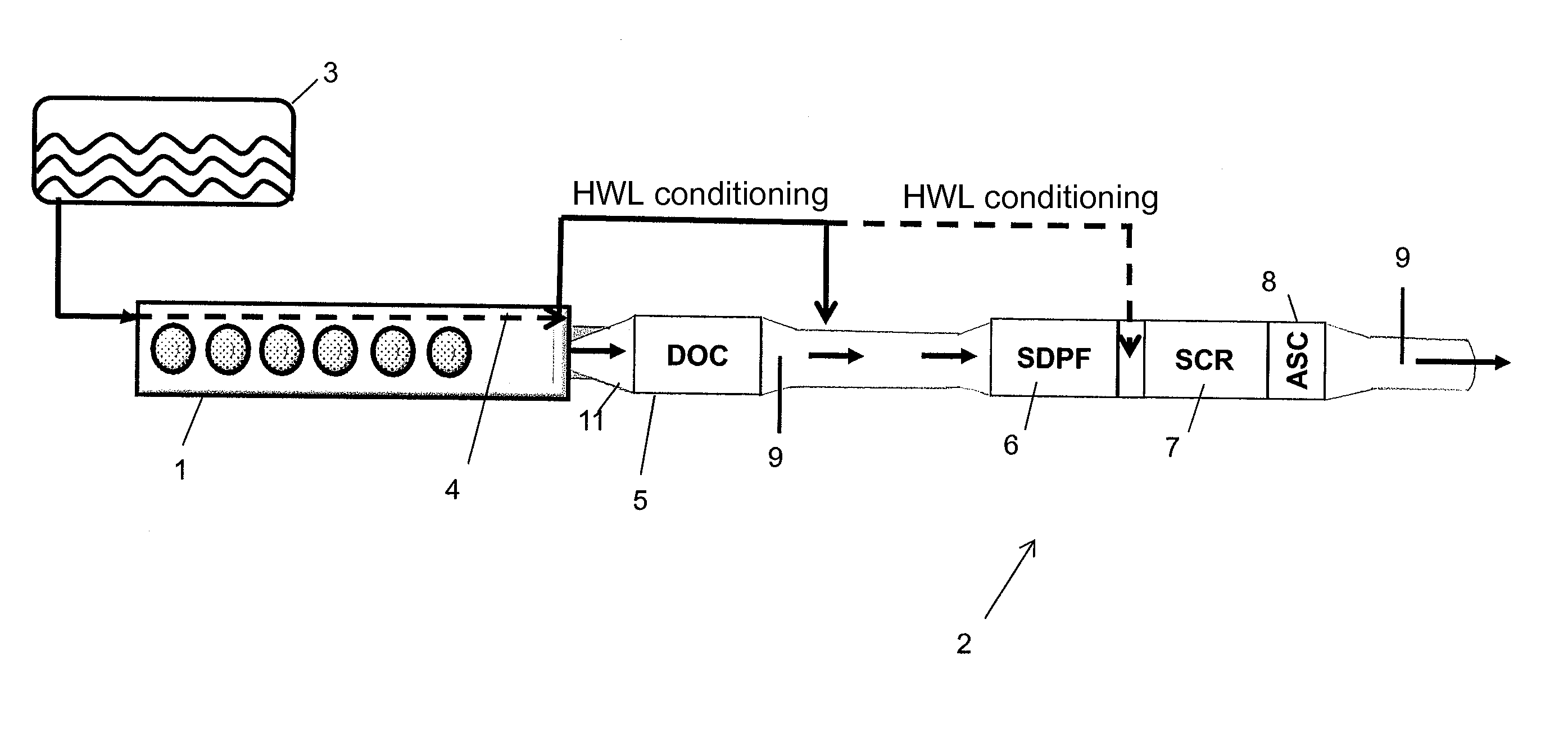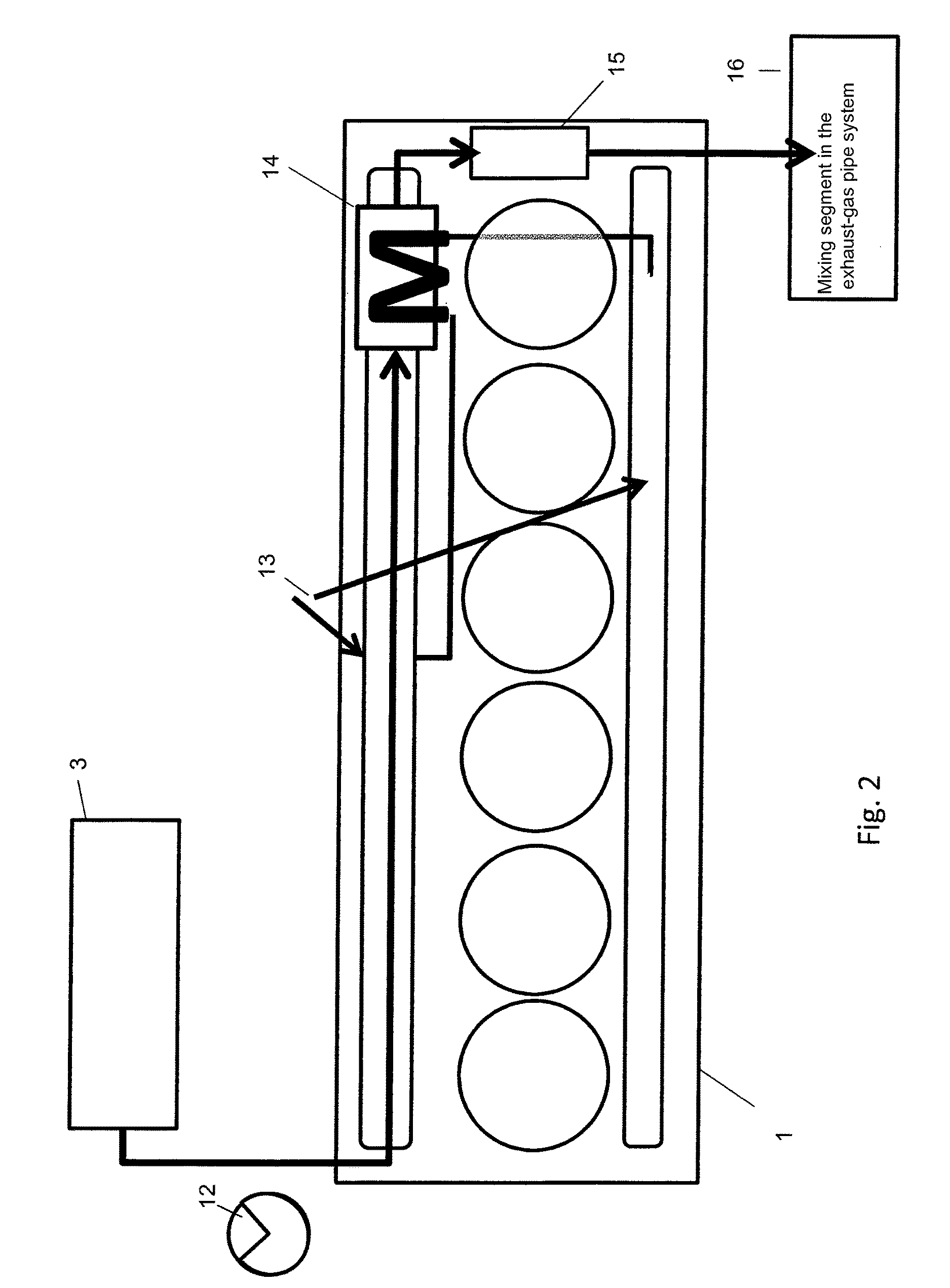Method for the purification of diesel engine exhaust gases
a technology for diesel engines and exhaust gases, applied in exhaust treatment, gas treatment, mechanical equipment, etc., can solve the problems of exhaust gas heat content that is not sufficient to complete the urea-water solution necessary, complete blockage of the exhaust-gas system, and conversion losses in the scr reaction, so as to reduce the asc and reduce the effect of no limitation in the efficiency of nox removal
- Summary
- Abstract
- Description
- Claims
- Application Information
AI Technical Summary
Benefits of technology
Problems solved by technology
Method used
Image
Examples
Embodiment Construction
[0045]FIG. 1 shows an internal combustion engine 1 comprising an exhaust-gas line 2 and a urea-water solution tank 3. A NOx sensor 9 and a urea-water solution feed device that is supplied by the urea-water solution heat exchanger 14 (FIG. 2) are arranged in the exhaust-gas line 2 between the DOC 5 and the SDPF 6 in the flow direction of the exhaust gas. The urea-water solution heat exchanger 14 can also supply the urea-water solution feed device with urea-water solution between the SDPF 6 and the SCR 7. An ammonia slip catalyst (ASC) 8 is located downstream from the SCR 7 in the flow direction of the exhaust gas. At the end of the exhaust-gas line 2, there is a NOx sensor 9. In an alternative configuration, it is provided that the urea-water solution heat exchanger 14 is arranged essentially in a double-walled exhaust-gas pipe 11 that has two NOx sensors 9, whereby one NOx sensor 9 is situated between the DOC 5 and the SDPF 6, while the other is behind the ASC 8.
[0046]FIG. 2 shows a...
PUM
| Property | Measurement | Unit |
|---|---|---|
| temperature | aaaaa | aaaaa |
| temperature | aaaaa | aaaaa |
| temperature | aaaaa | aaaaa |
Abstract
Description
Claims
Application Information
 Login to View More
Login to View More - R&D
- Intellectual Property
- Life Sciences
- Materials
- Tech Scout
- Unparalleled Data Quality
- Higher Quality Content
- 60% Fewer Hallucinations
Browse by: Latest US Patents, China's latest patents, Technical Efficacy Thesaurus, Application Domain, Technology Topic, Popular Technical Reports.
© 2025 PatSnap. All rights reserved.Legal|Privacy policy|Modern Slavery Act Transparency Statement|Sitemap|About US| Contact US: help@patsnap.com



